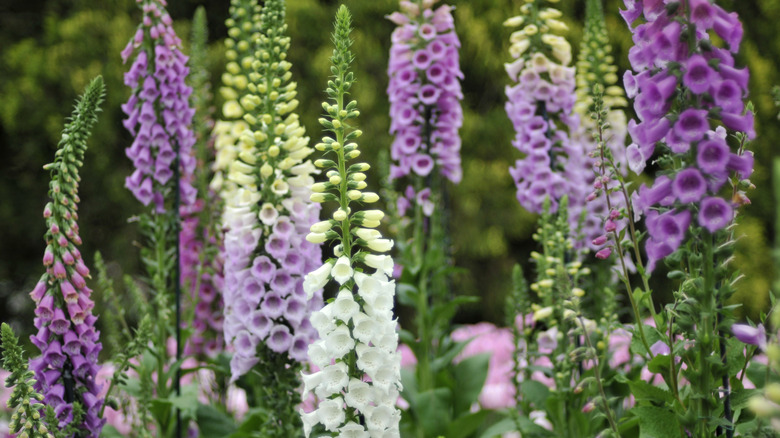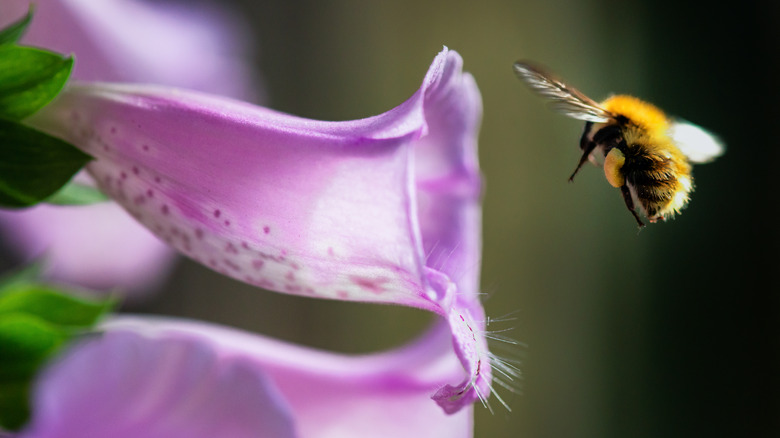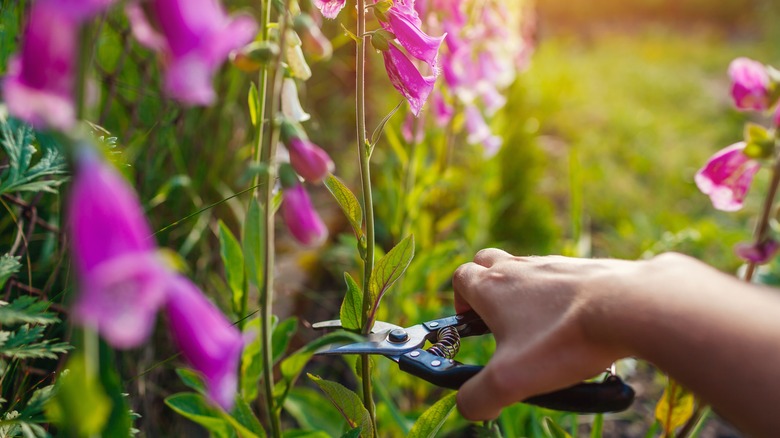How To Safely Remove Poisonous Foxglove From Your Yard
As you are planning a garden, you may want some unusual plants that have beautiful blooms. Unfortunately, some of the most beautiful plants are also toxic. Foxglove fits into this category. Some gardeners plant it on purpose because of its beauty. However, if you have kids and pets in your home, it's one of the most dangerous weeds, and you will want to destroy it immediately because of its toxicity. The safest way to remove foxglove is to put on gloves, a face mask, long sleeve clothing, and long pants. You then need to remove the entire plant, including digging up the roots. Use care, as any seeds that fall to the ground could sprout again the next season. Destroy or discard all aspects of the foxglove.
Why is foxglove so dangerous? People and pets can become ill from accidentally or purposefully ingesting any part, including the leaves, seeds, roots, stems, and flowers. In a high dose, it could kill a human or pet, and you may hear this illness referred to as Dead Man's Bells poisoning or Witch's Gloves poisoning.
Some signs of foxglove poisoning in a human include nausea, vomiting, abdomen pain, headaches, confusion, and skin rashes. If the poison affects your heart, you could suffer a dangerous irregular heart rate. People can have vastly different reactions to this weed, and preschool age children tend to have the strongest level of reaction. In pets, some signs of toxicity are vomiting, diarrhea, weakness, drooling, seizures, and slowed pulse.
What does the foxglove plant look like?
Before you start digging up random plants and weeds in your garden or yard because of concerns over foxglove, it's helpful to understand exactly what it looks like.
Foxglove can grow 6 feet or more in height on a large stalk, and the leaves and flowers extend from the stem. The flowers are its most distinguishing characteristic, which are light purple in color (sometimes white) with a shape like a bell and the opening pointing outward and downward. The leaves have a teardrop shape with a toothed edge and an almost fuzzy texture. You will often find seed pods with this particular weed that start as green and turn black as the seeds ripen. They typically grow in areas with very little foot traffic that don't receive a lot of mowing. Bees tend to congregate around foxglove, as the pollen in the weed's flowers attracts them.
The good news is that foxglove often needs a second growing season to reach its significant height. This weed looks more like a clump of leaves that remains close to the ground in the first year, making it easier for you to eliminate it. If you wait until the second growing season to try to kill the foxglove, the plant has greater strength and deeper roots, complicating removal. It can be tough to recognize it in the first growing season, though, because it tends not to create flowers until year two.
Steps to take to eliminate foxglove growing in your garden or yard
After donning safety gear and covering your skin, you are ready to tackle removing the foxglove. Take a plastic sheet or a garbage bag. Use scissors to cut a line in it to the center. Then lay the plastic flat on the ground and surround the stalk of the foxglove plant, so the stalk is in the center of the plastic. Tape the cut edges together, creating a makeshift plastic tarp that surrounds the foxglove plant. This tarp will catch any parts of the weed that fall to the ground as you try to remove it.
Now carefully cut the stalk at ground level. Avoid having any of your bare skin come into contact with it. Use pruners or a box cutter, and then wash the blade after using it. Carefully take the cut piece and place it upside down in a trash can or in a garbage bag. You do not want any of the seeds or leaves escaping. Do not place the stalk or any part of it in a compost heap, as the seeds often remain viable.
Next, use a shovel to dig up the root of the plant. Go deep so you can remove as many of the roots as possible. Shake loose any dirt stuck on the roots and then place the clump into the garbage. If the plant reappears later, use a weed killer while it's small.


